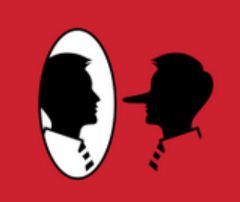We All Lie and Cheat, but Not Much
 Book Review: The Honest Truth About Dishonesty: How We Lie to Everyone – Especially Ourselves by Dan Ariely
Book Review: The Honest Truth About Dishonesty: How We Lie to Everyone – Especially Ourselves by Dan Ariely
Having demolished the belief that most people are rational in his last two books, Duke researcher Dan Ariely puts to death the concept that “most people are honest” in his newest book, The Honest Truth About Dishonesty: How We Lie to Everyone – Especially Ourselves. Most of us think of ourselves as honest, and unlikely to cheat, steal, or lie. In fact, just about all of us are subject to these failings, according to the experimental data Ariely has amassed.
It’s OK to steal Coca Cola, not money
The majority of the work described in the book was done with Ariely’s supervision or participation, and, as we have come to expect, his experiments are often delightfully simple yet still revealing. One such test involved leaving either cans of Coca Cola or a plate with an equal number of dollar bills in dorm refrigerators at MIT. Unsurprisingly, the soft drinks quickly vanished. But, despite the presence of an adjacent vending machine that would have converted the dollar bills into the same cans of Coke, the money remained untouched. Ariely thinks we are conditioned to believe that stealing money is wrong, and most of us won’t do it. An item that isn’t actually money, like the disappearing colas, are a different story. Similarly, many people might not think twice about taking a ream of paper home from the office, but would never take a few dollars from the petty cash box.
Cheating, and more cheating
A lot of the work in The Honest Truth involves variations on a simple experimental setup. At its most basic level, subjects are given a short test with insufficient time to complete more than a few of the questions. Then, they are asked to record the number of problems correctly completed. Numerous variations on the experimental setup show behavioral differences when cheating is easy (the subjects shred their answer sheet before reporting their number), when money is paid for correct answers, when subjects are primed to consider the possibility of cheating, etc.
In general, it seems, a little fudging is endemic to humans. When cheating is easy, the number of correct answers reported by a group always rises. Interestingly, though, the increase is always modest – if one group averaged four correct answers out of a possible twenty in a well-monitored situation, a similar group which was able to cheat might report an average of six. Even in experiments that offered monetary motivation to cheat and were conducted in a way that cheating could not be detected, virtually nobody reported completing all the problems. Apparently, on average we think it’s OK to cheat a little, but not too much.
Conflicts of Interest
The part of the book I found most interesting was Ariely’s discussion of conflicts of interest. He notes that the medical and dental professions are rife with potential conflicts – recommending a procedure to a patient will often result in more revenue for the practice. When a professional invests in a particular device or system, the potential conflict of interest grows as there’s an even stronger incentive to utilize that equipment. Ariely discusses the aggressive marketing of pharmaceutical companies (now slightly more constrained by law than in the past) which created numerous conflicts of interest by providing food and other items to doctors and their staff, and even paying them for doing presentations about the drugs. While every medical professional would deny being influenced by anything other than the best outcome for the patient, Ariely shows that conflicts of interest can change behavior without the conscious awareness of the individual.
Ariely provides an anecdote about a physician whom he trusted but who seemed to be unusually forceful in recommending a procedure; it turned out that the doctor needed one more subject to publish his results – a factor the doc didn’t acknowledge but almost certainly explained his behavior.
Art Appreciation?
Ariely describes an interesting conflict of interest experiment that had subjects evaluate art. Each item was marked with the name of a gallery, one of which was identified as the financial sponsor of the subject’s participation. Several findings were significant:
- The subjects exhibited a preference for art from their “sponsor” gallery.
- This preference was observed not just in their overt choices, but also by using fMRI to measure activity in the area of the brain associated with pleasure.
- The more people were paid by their sponsor, the greater the preference.
Of course, Neuromarketing readers won’t be surprised to find that the subjects denied their opinions were influenced in any way by who paid for their participation. This work shows that your doctor, your financial advisor, your auto mechanic, and others may be recommending unnecessary services and products that benefit them, but may not be consciously aware that their opinions have been biased.
There’s lots more to like (or dislike, perhaps, if you prefer to believe that most people are scrupulously honest) in The Honest Truth. Marketers will find fewer direct takeaways here than in Ariely’s previous books, Predictably Irrational and The Upside of Irrationality, but they’ll still gain interesting new insights into human behavior.
Amazon Link: The Honest Truth About Dishonesty: How We Lie to Everyone—Especially Ourselves
Amazon Kindle: The Honest Truth About Dishonesty: How We Lie to Everyone—Especially Ourselves
